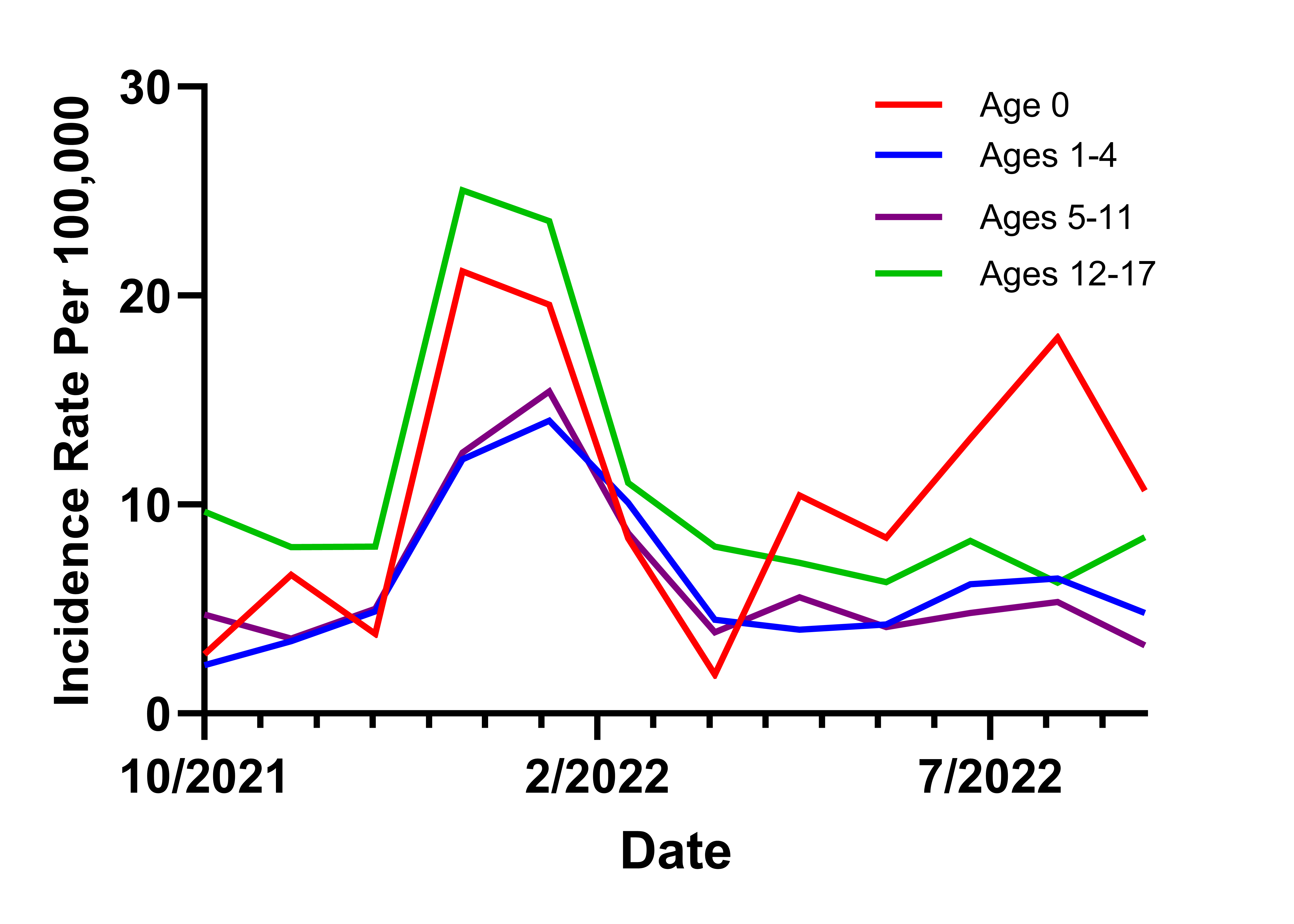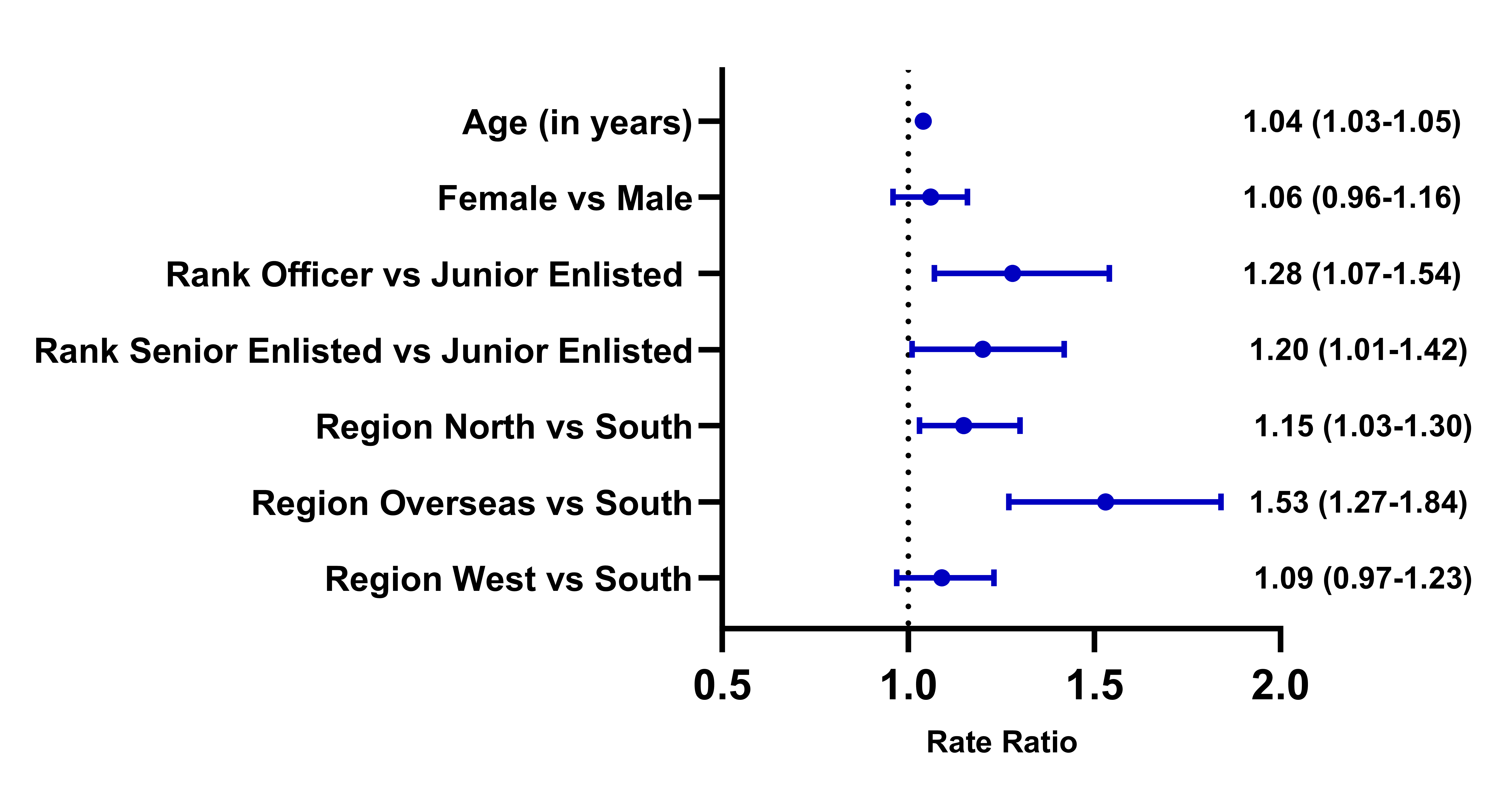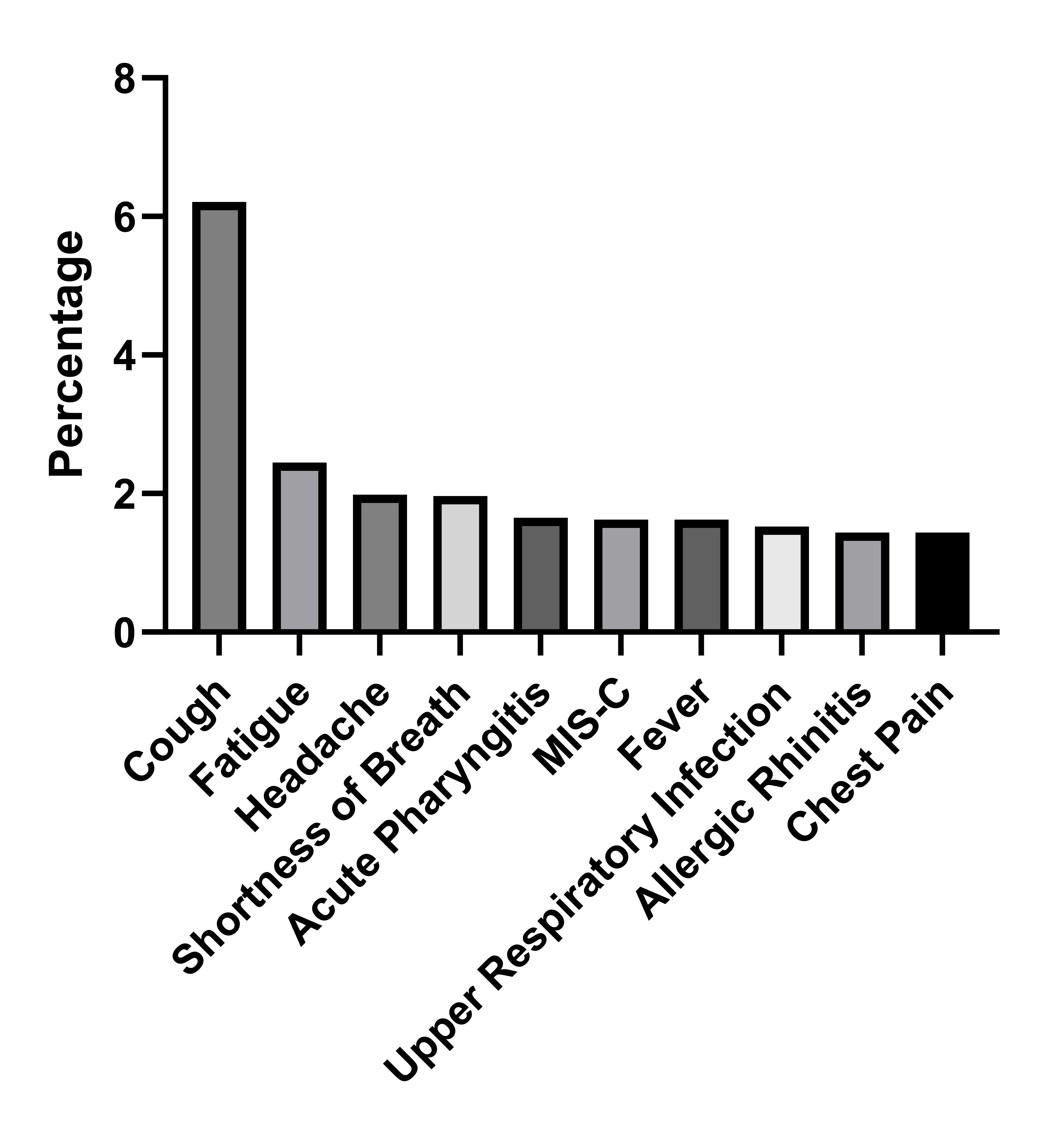Infectious Diseases
Session: Infectious Diseases 1
580 - Incidence Trends and Co-Diagnosis of Post-COVID Condition in the Pediatric Population of the US Military
Friday, May 3, 2024
5:15 PM - 7:15 PM ET
Poster Number: 580
Publication Number: 580.446
Publication Number: 580.446
- AS
Apryl Susi, MS, MLS (ASCP)CM (she/her/hers)
Clinical Epidemiologist III
HJF/USUHS, GWU
Bethesda, Maryland, United States
Presenting Author(s)
Background: Post-COVID condition (PCC) is the persistence or development of symptoms or conditions after COVID-19 infection. The ICD-10 diagnosis of PCC was officially introduced in Oct 2021.
Objective: To assess the incidence of diagnosed PCC, trends, demographic associations, and identification of common co-diagnoses in the pediatric population within the US military health system(MHS).
Design/Methods: We conducted a retrospective cohort study using MHS healthcare claims data spanning Oct 2021 to Aug 2022. Children 0 to 17 years enrolled in the MHS were eligible. PCC cases diagnosed were identified using the ICD-10 code U09.9, and monthly incidence rates calculated. Adjusted Poisson regression estimated rate ratios for PCC incidence, comparing age, sex, sponsor rank, and geographic region. The frequency of co-occurring diagnosis with PCC encounters were obtained.
Results: There were 2 million children enrolled monthly and 1,796 diagnosed with PCC during the study period. The median age was 10 years(IQR 5-15), and 50% were female. PCC was most common in the North(33%), and 65% were children of Senior Enlisted service members. Incidence rates trended upward, peaking in Feb 2022(Figure 1). Notably, incidence rates then declined for all age groups except infants, who showed an additional peak in Aug 2022. PCC rates were 28% higher among child dependents of officers and 20% higher among dependents of senior enlisted than junior enlisted service members(Figure 2). Rates were 15% higher in the North and 51% higher in the overseas regions compared to the South. PCC rates for females were similar to males. The most frequent co-diagnoses observed with PCC were cough(6.2%), followed by fatigue(2.5%), headache(2.0%), shortness of breath(2.0%), and acute pharyngitis(1.7%;Figure 3).
Conclusion(s): Although diagnosed PCC is rare in children in this cohort, PCC affects all age groups, with a surprisingly high rate in infants which was higher than all others during the second half of the study. PCC occurs equally by sex, but is higher in children of senior enlisted or officers suggesting higher socioeconomic status may be associated. Regional disparities were evident, with higher rates in children living overseas. The majority of co-occurring diagnoses with PCC are mild systemic or respiratory symptoms, which appear to be self-limiting. The findings of cough, shortness of breath, MIS-C and chest pain suggest more serious symptoms which may lead to the diagnosis of more serious long-term illnesses such as asthma. Future studies will attempt to define if co-diagnoses persisted or subspecialty care was needed in children with PCC.



